Winter Solstice 2023: Exact Date and 20 Amazing Facts
9. Death and Rebirth

©Steven L.J. Reich/Shutterstock.com
Some pagan traditions paint the winter solstice as a period of death and rebirth. Because the solstice marks the shortest day of the year, they regarded it as the death of the sun or the sun god. But, the winter solstice is also the moment when longer days and shorter nights begin. In that sense, the winter solstice marks a rebirth of the sun. Although the weather remained cold, spring would eventually arrive. In essence, the world was becoming new again, reborn for another season.
Tracking the sun was important for ancient communities. It helped them know when to plant to receive the best yield. It showed them when to harvest and pull grain in for the long winters. Knowing when the winter solstice was also helped people estimate how long it would be until spring. In order to keep tabs on the sun and the seasons, some people built monuments that would make it obvious when the winter solstice had arrived.
10. Stonehenge
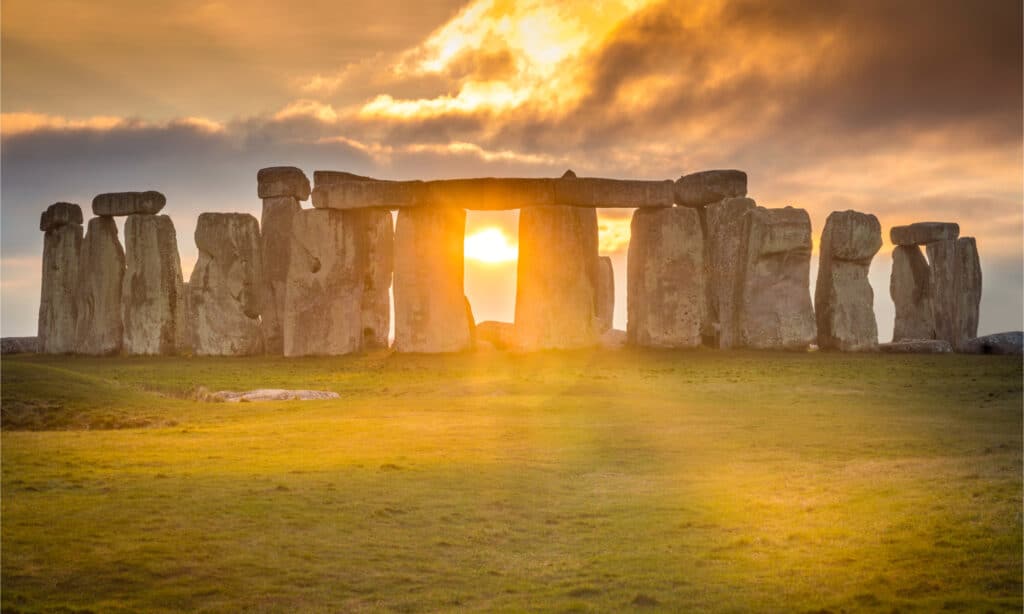
©Chuta Kooanantkul/Shutterstock.com
Of all the ancient monuments constructed to mark the seasons, none may be more well-known than the giant rock circle known as Stonehenge. Located in Wiltshire in southern England, Stonehenge was built approximately 4,500 years ago. While the number of stones used in its construction is unknown, Stonehenge currently consists of 83 massive stones. When the sun sets on the winter solstice, the sunlight is perfectly framed between two standing stones in the center of Stonehenge. Mysteries surround Stonehenge, including how the stones were transported from areas more than 200 miles away. Archaeological digs in the area indicate that farmers built Stonehenge and used it to mark both the winter and summer solstices. This would have been important to an agrarian society to mark growing and harvest seasons.
11. Newgrange
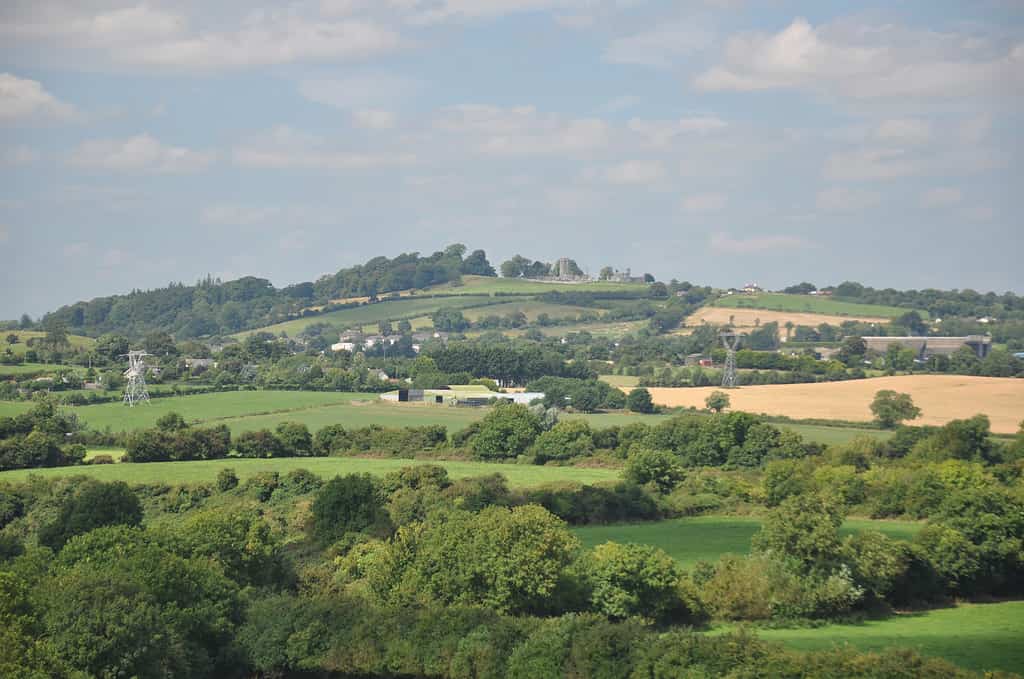
©Jen Peng/iStock via Getty Images
Older than both Stonehenge and the Giza Pyramids, Newgrange was constructed sometime around 3,200 B.C. as a tomb. Although it was discovered in the late 1600s, full-fledged excavation work at Newgrange did not begin until 1962. Workers discovered a small structure on top of Newgrange, dubbed the “roof box.” As the sun rises on the winter solstice, sunlight enters Newgrange through the roof box and illuminates the tomb for 17 minutes. Newgrange draws more than 200,000 visitors per year. To prevent the clamor of visitors to Newgrange on the winter solstice, a ticket lottery was established in 2000. Only 60 people are allowed inside Newgrange during the winter solstice event.
12. Tulum
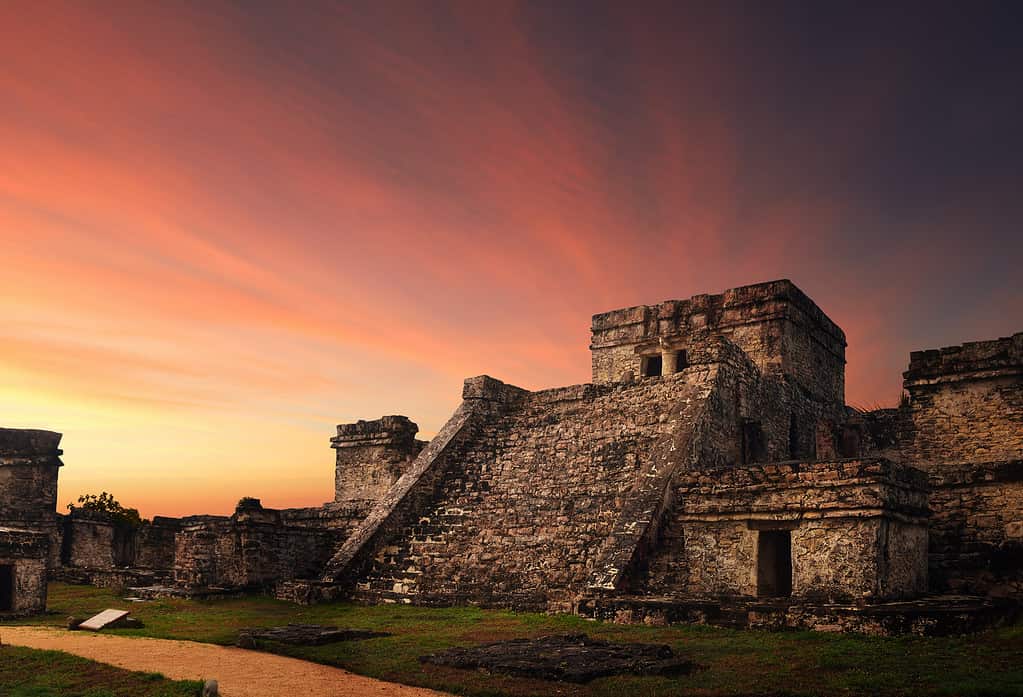
©Soft_Light/iStock via Getty Images
Near Cancun, Mexico lie the ruins of the Mayan-built city of Tulum. In its heyday, over 800 years ago, Tulum served as a seaport and trade center. Mayans were fully aware of the importance of the solstices. When the sun rises on the winter solstice, the sunlight hits a hole at the top of one of the stone ruins. That winter solstice sunrise light disperses into a beautiful starburst effect.
13. The Goseck Circle
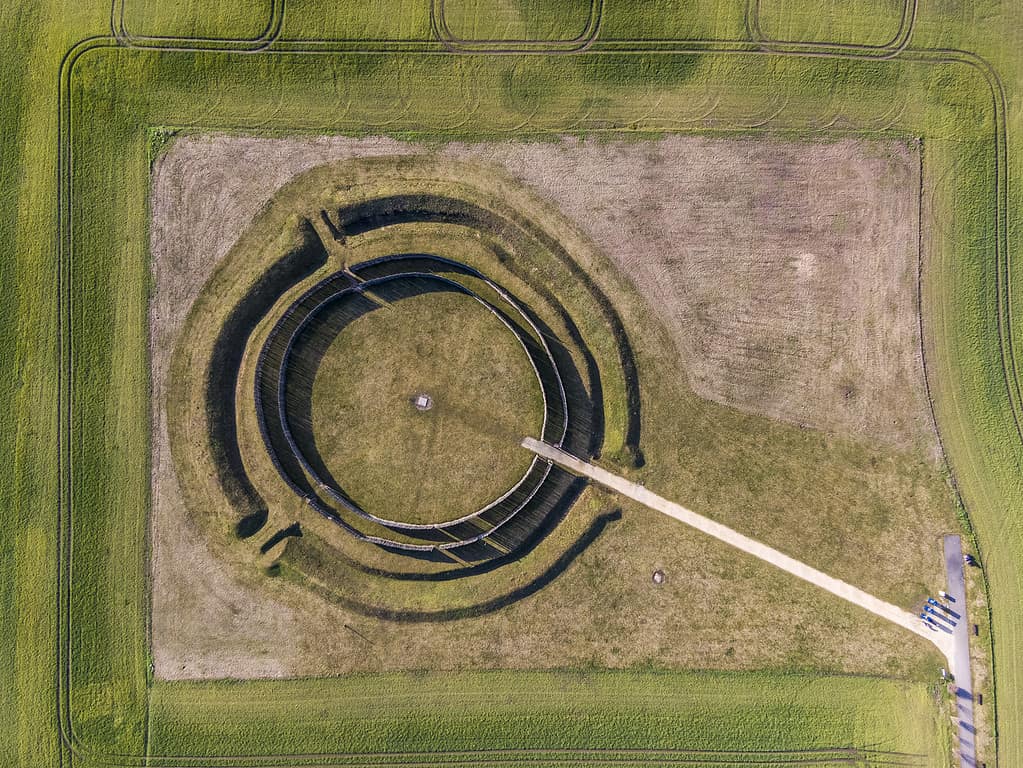
©Iurii Buriak/iStock via Getty Images
Not discovered until 1991, the Goseck Circle in Goseck, Germany, is one of the oldest solar calendars on Earth. Carbon-dated back to 4,900 B.C., the Goseck Circle may have been a sacred site for its builders. Archaeological digs have uncovered not only pottery shards, but the remains of both decapitated animals and humans. Spaced around the wall that enclosed the Circle are three gates. On the winter solstice, the sun rises from the southeast gate and sets behind the southwest gate. While the actual function of the Goseck Circle has not been fully established, it exists on the same latitudinal line as Stonehenge. That geographical fact leads many to believe that the Goseck Circle was used primarily as a solar observatory.
14. Saturnalia
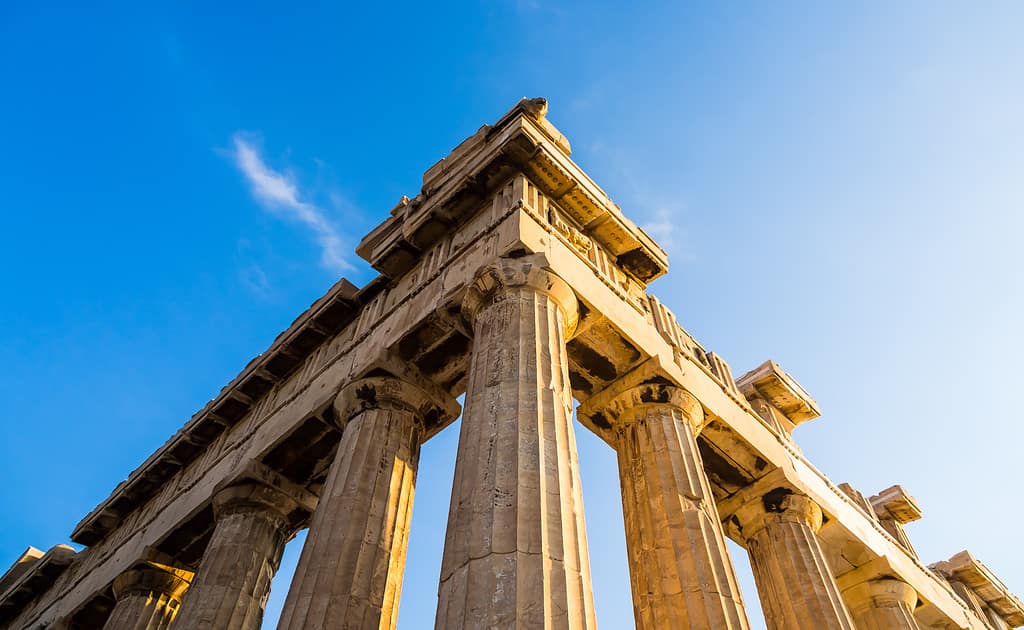
©Natallia Pershaj/iStock via Getty Images
Ancient Romans knew how to party! Saturnalia was a seven-day-long festival. Traditionally, Saturnalia began on December 17 and encompassed the day of the winter solstice. Role reversal and relaxed rules were the hallmarks of Saturnalia. Slaves were served dinner by free Romans. Public gambling, normally forbidden by Roman law, was permitted. Togas were replaced by the less formal synthesis, an informal dress-like garment. Hedonism held sway as food and wine were free and accessible to everyone. During the final days of Saturnalia, coinciding with the winter solstice, Romans gave each other gifts such as wax figurines and candles. As Christianity gained prevalence, many Saturnalia rituals were absorbed and transformed to fit the calmer celebration of Christmas.
15. Ghosts Might Walk on Yule
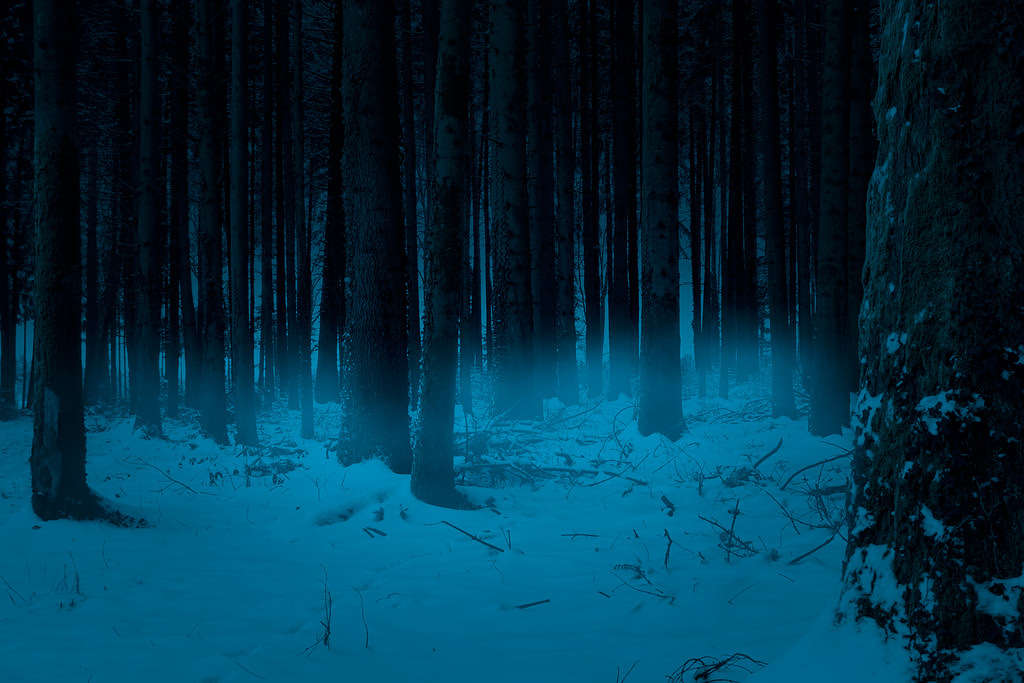
©dosmass/iStock via Getty Images
Derived from the Scandinavian word juul, Yule is a Pagan winter celebration that encompasses the winter solstice. Feasting and gift-giving are all part of the tradition. Depending on the culture, Yule could last as long as twelve days. Like some other mid-winter festivals, Yule marks the sun’s rebirth and the beginning of longer days and shorter nights. Traditionally, on the winter solstice evening, people burned a Yule log. In some cultures, families brought in an entire tree! They began by lighting the largest end of the true first. As the tree was consumed, they pushed the tree further into the hearth to keep the fire burning.
According to Old Norse traditions, the division between the worlds of the living and the dead (known as “the veil”) became thin on the winter solstice. Drawn to the light of the Yule log, ancestral spirits would visit their families’ homes. These spirits would somehow give people advice about how to weather the upcoming year. Evil spirits roamed during the winter, as well. Germanic peoples used evergreen wreaths and holly to ward off those maleficent ghosts.
16. The Victory of the Oak King

©Oksana_Schmidt/iStock via Getty Images
Modern-day Druids call their winter solstice celebration Alban Arthan, which means the “Light of Winter.” In Druidic lore, the solstice represents the defeat of the Holly King, who is in control from the summer solstice to the winter solstice, by the Oak King, who reigns from the winter solstice to the summer solstice. Since days start growing longer after the winter solstice, the Oak King’s yearly victory makes symbolic sense. During winter solstice rituals, ancient Druids considered mistletoe sacred because it remained green during the cold weather.
17. Counting Down to Spring After Dongzhi

©YamisHandmade/iStock via Getty Images
One of the most important festivals in China, Dongzhi takes place during the winter solstice. Food is an essential part of Dongzhi as people prepare special dishes like roasted pork, dumplings, and rice balls called tangyuan. During Dongzhi, people worship their ancestors by burning incense and setting out symbolic plates of food. In Southern China, people mark the time from the winter solstice until the impending arrival of spring. Tradition holds that there are nine periods of nine days called the Nines of Winter. After the final nine-day period and thereafter, the ground in the fields becomes warm enough to work.
18. Burn the Clocks in Brighton
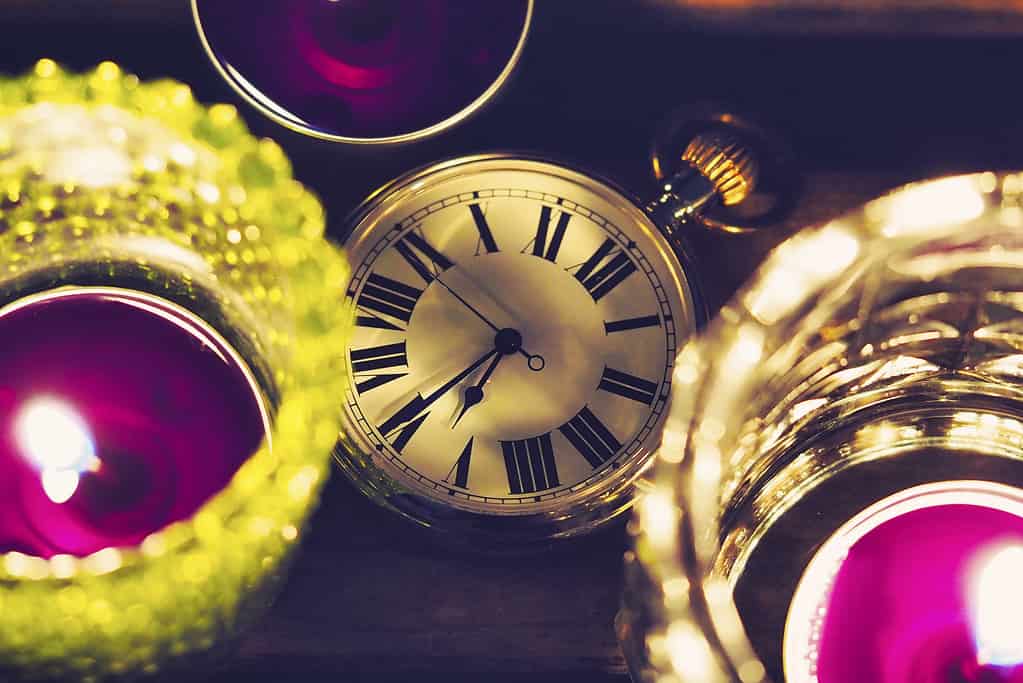
©bee32/iStock via Getty Images
People in Brighton, England celebrate the winter solstice with a festival called Burning the Clocks. This festival marks the passing of time in elaborate fashion. Not only does a parade wind through the Brighton streets, but celebrants create black and white paper lanterns. Participants wear costumes, all of which are decorated with a clock face. At the end of the parade route on Brighton Beach, the lanterns are placed into a large bonfire as fireworks explode. It’s a raucous way to invite to send off the winter solstice!









